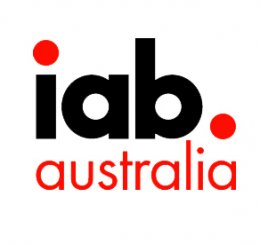
15th April 2020 – Sydney, Australia: With Australian brands actively reviewing how to adapt their businesses models to address the rapidly changing market conditions, new research conducted by Pollinate for IAB Australia has recommended reviewing the strategies of direct brands, particularly around ecommerce, finding that the direct brand economy is achieving mainstream status and has much to offer traditional brands.
The report, Direct Brands 2020 was commissioned by IAB Australia to help the local industry understand the implications of the rise of direct brands. It follows on from ground breaking research conducted by IAB USA and UK. The direct to consumer movement for new disruptor brands has been well documented over the last few years and this local research looks at what it takes to build and retain a sustainable direct business, identifies the challenges as these business grow; and gives guidance to traditional brands now moving to data-driven and e-commerce models. The full report can be accessed on the IAB website.
Direct Brands 2020, found that direct brands are doing more than just selling online directly to consumers, noting that their nimble business models, strong brand purpose, empathetic mission-based marketing, combined with classic marketing expertise across pricing, promotion, product and distribution were all contributing to the resilient direct brand landscape in Australia.
The report dispelled the idea that direct brand shoppers are just millennial, with nearly two thirds of those who have purchased from a direct brand aged over 40. It also found that almost 80% of all direct brand shoppers always research before making a brand purchase for the first time (versus 66% for people who do not purchase from direct brands).
According to Gai Le Roy, IAB Australia CEO, direct brands are redefining what it means to be a customer centric, data driven business.
“Even though this research was conducted pre-COVID19, the findings are more important than ever for marketers,” said Le Roy. “These direct brand organisations are engaging resilient and well-rounded marketers who are hands on with the promotional components, as well as driving product, pricing and distribution strategies. While direct brands will find themselves in a learning phase as they mature, the success of sustainable direct brands offers important lessons for the wider retail and advertising industries,” said Le Roy.
Direct Brands Australia noted that traditional brands should focus on four key areas to adapt to the direct brand model:
- understand the opportunity of direct-to-consumer including the value of using new channels and routes to market that offer 1st party data relationships;
- return to a clear brand purpose;
- position the brand as a master of a category to demonstrate authority; and
- employ a nimble test and learn approach to marketing and innovation in product development.
By contrast direct brands need to focus on six key areas to build long term sustainability including combining branding and performance in campaigns; prioritising LTV over CAC and avoiding over reliance on WOM and advocacy.
Howard Parry Husbands, CEO of Pollinate said: “Direct businesses should continue to be customer-centric and explore the opportunity in a broader media mix, but they should look to learn from the wider media industry and traditional marketing models to drive growth without losing what’s special about them.”
Direct Brands Australia also noted the convergence of commerce, data and content popularised by direct brands and e-tailers is also surfacing the opportunity for direct brands to potentially disrupt traditional media companies. This could result in a few savvy, highly successful multi-disciplined direct brand companies becoming the new media gatekeepers, using their own first party user data and selling ads on their own content.
Kristy Chong – Founder of Modibodi commented “We don’t lock in anything further than a quarter ahead. We know that also means we pay price premiums [for media], but because we want to maintain that flexibility, and we are still testing as well. So, we are testing all these different channels and seeing how they all work together.”
The IAB USA direct brand research released in February 2020 noted that while only one third of direct brands see incumbent brands as their primary competitor, an increasing number of traditional brands are adapting to the direct brand model, including Nike, P&G and L’Oréal, often both with their own existing products and with the acquisition of disrupter brands.
The full report is available to members.
/Ends
About the Interactive Advertising Bureau
As an independent industry association with more than 150 members in Australia and nearly 9,000 globally spanning media owners, publishers, technology companies, agencies and advertisers, IAB works to align industry stakeholders to develop solutions for the issues faced by the market and develop standards that are integral to the operation of digital advertising.
IAB Australia also works closely with other industry associations including MFA and AANA to help shape the rules of play around measurement, Australian Digital Ad Practices, mentorship, global tech and policy work, Tech Lab standards, standardising terminology and supporting the broad media and marketing community.
www.iabaustralia.com.au
For further information about IAB Australia please contact:
Gai Le Roy
CEO – IAB Australia
T: 0408 431 455
E: gai@iabaustralia.com.au
Pru Quinlan
Einsteinz Communications
T: (02) 8905 0995
E: pru@einsteinz.com.au